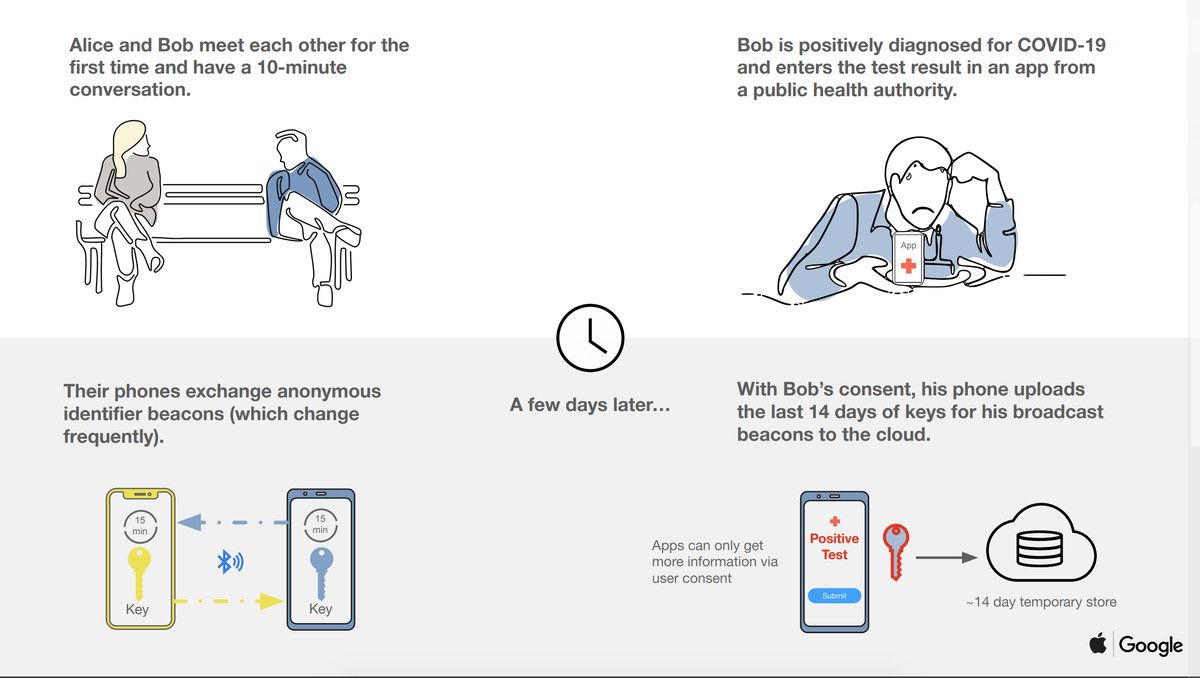Apple and Google are jointly building software into iPhone and Android devices. To help track the spread of coronavirus by telling users if they contacted an infected person. And are potentially sick themselves. The new project slated for release in May. Medical experts know that contact tracing is vital to public health during disease outbreaks. The technique has been one key to the success of countries like-South Korea in turning back the tide of the pandemic inside their own borders. This Silicon Valley effort will be one of the biggest American attempts to closely track the spread of coronavirus. It is not the national coronavirus surveillance system that the White House was reportedly seeking.
To help public health officials slow the spread of #COVID19, Google & @Apple are working on a contact tracing approach designed with strong controls and protections for user privacy. @tim_cook and I are committed to working together on these efforts.https://t.co/T0j88YBcFu
— Sundar Pichai (@sundarpichai) April 10, 2020
To build the voluntary contact tracing network, the new tech will rely on Bluetooth. Typically used for short-distance communication between devices. When you test positive for the virus, you enter that information into an app on your phone. And other people who have been near you in the previous 14 days alerted. Your own information remains private.

Working of Tech
The software will simply consist of an API (application programming interface) that lets Apple and Android phones. Which use distinct operating systems, swap data with each other. Users will have to separately download apps created by health authorities. That uses the API as the underlying system for exchanging data. The data will be accessible to public health officials but will not include information. That is personally identifiable either to the companies or to governments. Later on, the two firms plan to add contacts -tracing software directly into the operating systems. So that it will be on more people’s phones by default.

Wide adoption will be necessary to make this an effective tool. This app, TraceTogether, which similarly uses Bluetooth to track the disease, adopted by 12% of the population. Health authorities will also need to create apps that can use the API. Finally, the idea all still hinges on there being widespread, rapid, reliable testing that lets people know they’re sick in the first place.


